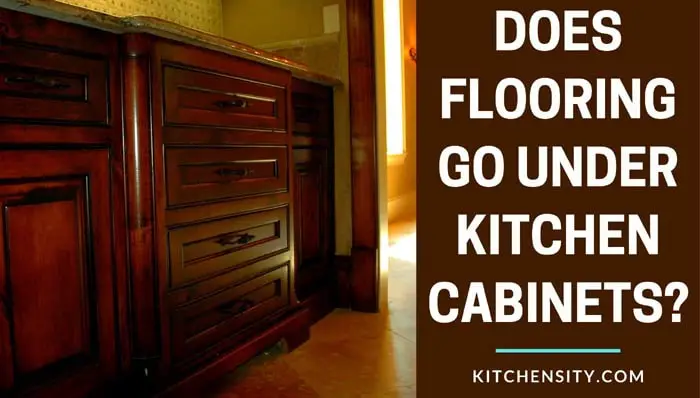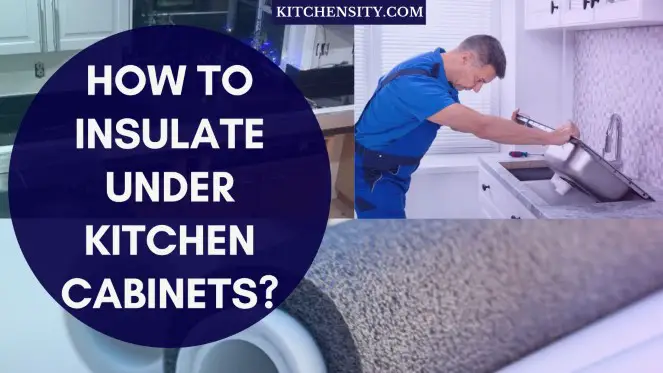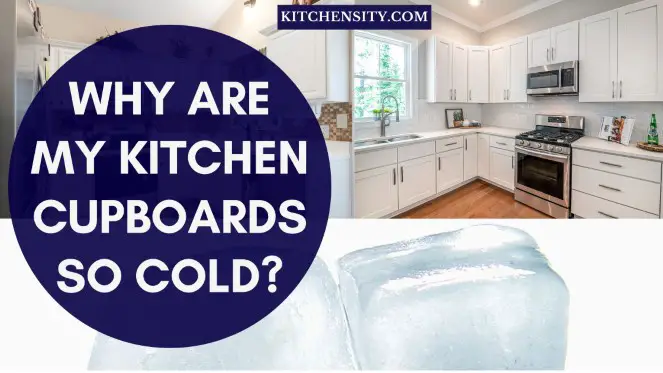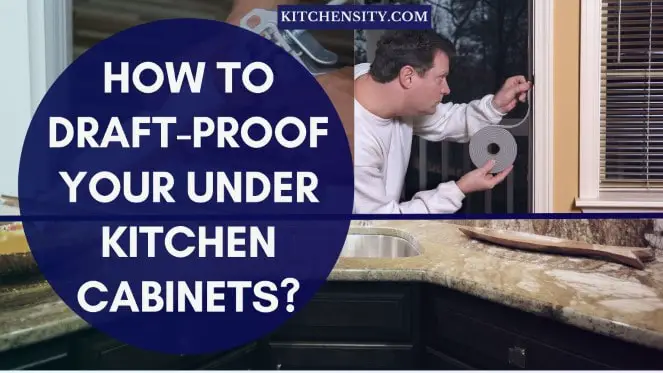Do you ever feel like your kitchen cabinets are colder than the rest of your home?
Do you dread opening them up in the winter months? If so, you’re not alone.
The good news is that insulation can help solve this problem. Also, the right insulation can help prevent moisture accumulation and keep your kitchen looking great for years.
This blog post will discuss the best insulation for under kitchen units, each type’s pros, and cons, and provide specific product recommendations.
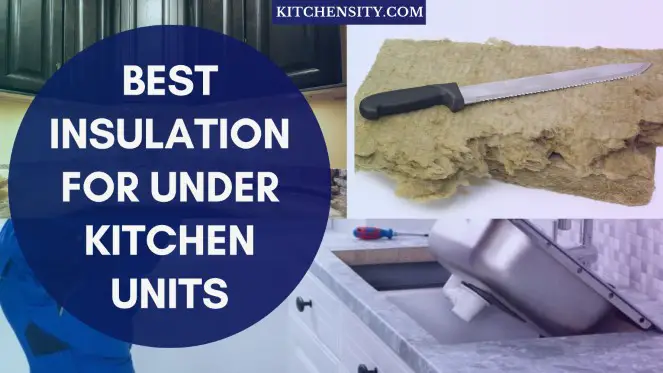
Table of Contents
- 1 Why Insulation Is Important Under Kitchen Units?
- 2 Types Of Insulation Available
- 3 Best Insulation for Under Kitchen Units
- 4 Comparison Table And Review
- 5 Factors to Consider When Choosing the Best Insulation
- 6 Tips For Installing Insulation Under Kitchen Units
- 7 Some Important Questions
- 8 Conclusion
- 9 YOU MAY ALSO LIKE
- 10 FAQs
- 10.1 Do I Need To Insulate Under My Kitchen Units?
- 10.2 What Is The Most Effective Type Of Insulation?
- 10.3 How Do I Install Insulation Under My Kitchen Units?
- 10.4 How Can I Tell If I Have Moisture Buildup Under My Kitchen Units?
- 10.5 How Often Should I Check My Insulation?
- 10.6 How Much Does It Cost To Insulate Under Kitchen Units?
- 10.7 What Is The Best Insulation To Use In A Crawl Space?
- 10.8 What Material Is Heat Resistant For Kitchen Cabinets?
Why Insulation Is Important Under Kitchen Units?
- Insulation under kitchen units is essential for preventing moisture buildup, which can cause mold, mildew, and rot.
- Moisture can also damage your kitchen flooring and cabinets over time, leading to costly repairs. It acts as a barrier between your kitchen and the crawl space or basement below, keeping moisture from seeping up and causing damage.
- Insulation can help to keep your kitchen cabinets warmer in the winter and cooler in the summer.
- It can also help to reduce drafts and noise.
By insulating under your kitchen units, you’ll be able to enjoy a more comfortable kitchen all year round.
Types Of Insulation Available
Several types of insulation can be used under kitchen units. Each has its pros and cons, so it’s important to consider your specific needs and requirements before making a decision.
Fiberglass Insulation
Fiberglass insulation is made from glass fibers and is a popular choice for insulation due to its affordability and ease of installation.
It can be easily cut to size and is available in rolls or batts. However, it can be dusty and itchy to work with and is not as effective in sealing gaps and air leaks.
Cellulose Insulation
Cellulose insulation is made from recycled paper and is non-toxic and fire-resistant. It is a good option for those who want to use eco-friendly insulation material.
It is also more effective in sealing gaps and air leaks compared to fiberglass insulation. However, it is more expensive than fiberglass insulation.
Foam Insulation
Foam insulation is made from a variety of materials, including polyurethane, polystyrene, and fiberglass.
It is easy to install and provides a good air seal, making it the most effective option for preventing heat loss and air leaks. However, it is more expensive than other types of insulation.
Spray Foam Insulation
Spray foam insulation is a popular choice for insulating under kitchen units. It is applied as a liquid and then expands to fill the space.
Spray foam insulation is very effective at preventing moisture buildup and can also help reduce noise.
However, it is more expensive than other types of insulation and can be difficult to install.
Best Insulation for Under Kitchen Units
1. Owens Corning EcoTouch Pink Fiberglass Insulation
Owens Corning EcoTouch Pink Fiberglass Insulation is a popular option for under-cabinet insulation. It’s made from 99% natural materials and contains no formaldehyde. It has a high R-value and is easy to install.
PROS
- Made from natural materials
- Contains no formaldehyde
- High R-value
- Easy to install
CONS
- Can irritate skin and eyes during installation
2. Greenfiber Blow-In Cellulose Insulation
Greenfiber Blow-In Cellulose Insulation is another great option for under-cabinet insulation. It’s made from recycled paper and has a high R-value. It’s also easy to install and can help reduce sound transfer.
PROS
- Made from recycled materials
- High R-value
- Easy to install
- Reduces sound transfer
CONS
- Can settle over time, reducing its effectiveness
3. Touch ‘n Foam 2-Component Spray Foam Insulation Kit
Touch ‘n Foam 2-Component Spray Foam Insulation Kit is a two-part spray foam insulation that’s great for filling gaps and crevices under kitchen cabinets. It has a high R-value and is easy to apply.
PROS
- Fills gaps and crevices easily
- High R-value
- Easy to apply
CONS
- Can be messy during the application
- Not as eco-friendly as other options
4. Dow FROTH-PAK 620 Foam Insulation Kit
Dow FROTH-PAK 620 Foam Insulation Kit is another two-part spray foam insulation kit that’s great for under-cabinet insulation. It has a high R-value and is easy to apply.
PROS
- High R-value
- Easy to apply
- Durable
CONS
- Can be messy during the application
- Not as eco-friendly as other options
Comparison Table And Review
| Product Name | Type | Material | Coverage | R-Value | Ease of Installation | Price | Eco-Friendly |
|---|---|---|---|---|---|---|---|
| Owens Fiberglass Insulation | Batts/Rolls | Fiberglass | 88 sq. ft. | R-19 | Easy | $60-70 | Yes (contains 65% recycled materials) |
| Greenfiber Cellulose Insulation | Loose Fill | Cellulose | 40-50 sq. ft. | R-19 | Easy | $16-20/bag | Yes (made from 85% recycled materials) |
| Touch ‘n Foam Spray Foam Insulation | Spray Foam | Polyurethane | 15-20 sq. ft. | R-6.7 | Easy | $35-40 | No |
| Dow Foam Insulation | Spray Foam | Polyurethane | 620 board ft. | R-6.2 | Moderate | $500-600 | No |
Note: Prices are approximate and may vary depending on the retailer and location. R-Value is a measure of thermal resistance, with higher values indicating better insulation. Ease of installation is rated on a scale of easy to difficult.
Review
Based on the comparison table and the information gathered, the best insulation product for installation under kitchen cabinets will depend on several factors such as personal preference, budget, and installation requirements.
If ease of installation is a priority, the Owens Corning EcoTouch Pink Fiberglass Insulation or the Greenfiber Blow-In Cellulose Insulation may be a good choice.
The Owens Corning product is available in pre-cut batts or rolls, which can easily fit in tight spaces. The Greenfiber product is also easy to install and can be blown into place with a machine.
However, if you’re looking for the best insulation performance, the Touch ‘n Foam 2-Component Spray Foam Insulation Kit or the Dow FROTH-PAK 620 Foam Insulation Kit may be better suited.
These products provide a higher R-value per inch and expand to fill gaps, providing a more airtight seal.
Ultimately, it’s important to consider your specific needs and priorities when choosing an insulation product for under kitchen cabinets.
If you’re unsure which product to choose, consult with a professional installer or a home improvement expert for guidance.
The most important aspect of choosing the best insulation for under kitchen cabinets is ensuring that it meets your specific needs.
Whether you’re looking for an eco-friendly option, an easy-to-install option, or a high-performance option, there is a product available to suit your needs.
Factors to Consider When Choosing the Best Insulation
When choosing the best insulation for under your kitchen units, there are several factors to consider:
R-Value
The R-value is a measure of the insulation’s effectiveness in preventing heat transfer. The higher the R-value, the more effective the insulation is at preventing heat transfer.
When choosing insulation for under kitchen units, it’s important to choose insulation with a high R-value to prevent heat loss and gain.
Moisture Resistance
Moisture resistance is also an important factor to consider when choosing insulation for under kitchen units.
The insulation should be able to resist moisture buildup and prevent mold and mildew growth.
Spray foam insulation and foam board insulation are two of the most effective types of insulation for preventing moisture buildup.
Fire Resistance
Fire resistance is another important factor to consider when choosing insulation for under kitchen units.
Some types of insulation are more fire-resistant than others, so it’s important to choose an insulation that meets your local building codes and regulations.
Installation
The ease of installation is also an important factor to consider when choosing insulation for under kitchen units.
Some types of insulation are easier to install than others, and some may require professional installation.
It’s important to choose an insulation that you can install yourself or that you can afford to have installed professionally.
Tips For Installing Insulation Under Kitchen Units
Once you have chosen the type of insulation you want to use, it’s time to install it under your kitchen units. Here are some tips to help you get the job done:
1. Remove The Kickboards From The Kitchen Cabinets.
- The first step in installing insulation under your kitchen units is to remove the kickboards.
- These are the panels at the bottom of the cabinets that cover the space between the floor and the bottom of the cabinets.
- Use a screwdriver or pry bar to gently remove the kickboards.
- Be careful not to damage them in the process, as you will need to replace them once the insulation is installed.
2. Vacuum The Area Under The Cabinets To Remove Any Dust Or Debris.
- Before you install the insulation, you’ll need to clean the area under the cabinets.
- Use a vacuum cleaner to remove any dust, dirt, or debris that may have accumulated under the cabinets.
- This will ensure that the insulation has a clean surface to adhere to and will help prevent any unwanted smells or pests from entering your home.
3. Cut The Insulation To Fit The Space Under The Cabinets.
- Measure the length and width of the space under your kitchen cabinets, and use these measurements to cut your insulation to size.
- Be sure to leave a small amount of excess insulation around the edges to ensure a snug fit.
4. Staple Or Tape The Insulation In Place.
- Once you have cut the insulation to size, staple or tape it in place.
- Be sure to cover the entire area under the cabinets, including any corners or hard-to-reach areas.
5. Replace The Kickboards.
- After the insulation is installed, replace the kickboards.
- Make sure they are securely attached, so they don’t come loose and expose the insulation underneath.
Read The Complete Steps Here – How to Insulate Under Kitchen Cabinets?
Some Important Questions
1. How Do I Protect Mine Under Cabinets From The Heat?
To protect the under cabinets from heat, you can use a variety of materials or techniques, including
- Install A Heat Shield: You can install a heat shield between the cabinets and the heat source, such as a stove or oven. This can be a sheet of metal or a specially designed heat shield that is attached to the underside of the cabinets.
- Use Heat-Resistant Materials: Choosing heat-resistant materials for the cabinets and surrounding area can also help protect the under cabinets from heat damage. Materials such as stainless steel, aluminum, and heat-resistant laminate are good options.
- Increase Ventilation: Increasing ventilation in the kitchen can help dissipate heat and reduce the risk of damage to the cabinets. This can be done by installing a vent hood or opening windows and doors to allow air to circulate.
- Regular Cleaning: Keeping the area around the cabinets clean and free of grease can also help prevent heat damage. Regular cleaning can remove any grease buildup that can contribute to heat buildup and damage to the cabinets.
By using one or more of these techniques, you can help protect your under cabinets from heat damage and keep them looking their best for years to come.
How Can I Maintain The Insulation To Provide Adequate Insulation Over Time?
To maintain the insulation under your kitchen cabinets and ensure it continues to provide adequate insulation over time, there are a few key steps you can take:
- Regularly inspect the insulation for signs of damage, such as tears or compression. If you notice any damage, replace the insulation as soon as possible to prevent air leaks.
- Keep the area under your cabinets clean and free of debris. Dirt, dust, and other debris can accumulate under your cabinets and reduce the effectiveness of your insulation.
- Seal any gaps or cracks around the edges of your cabinets to prevent air leaks. You can use caulking or weatherstripping to seal these areas and prevent air from escaping.
- Maintain proper ventilation in your kitchen to prevent moisture buildup, which can damage insulation over time.
- Use exhaust fans when cooking or running the dishwasher, and keep windows open when possible to allow for fresh air circulation.
By following these tips, you can help maintain the insulation under your kitchen cabinets and ensure that it continues to provide adequate insulation over time.
How Does The Location And Climate Affect The Type Of Insulation?
The location and climate can have a significant impact on the type of insulation that should be used under kitchen cabinets.
For example, in colder climates, it is important to use insulation with a higher R-value to prevent heat loss and maintain a comfortable indoor temperature.
In warmer climates, the focus may be on preventing heat gain and maintaining a cool indoor temperature.
Additionally, the location of the kitchen can also impact the type of insulation that should be used.
For example, if the kitchen is located in the basement or over a crawl space, it may be more prone to moisture and humidity, which can impact the effectiveness of certain types of insulation.
It is important to consider the specific location and climate when selecting insulation for under kitchen cabinets.
Consulting with a professional insulation contractor can help ensure that the right type of insulation is selected based on the unique needs and conditions of your home.
Conclusion
Insulating under your kitchen units can help keep your kitchen warmer in the winter and cooler in the summer.
It can also help to reduce drafts and noise and prevent moisture build-up, making your home more comfortable and energy-efficient.
When it comes to choosing the best insulation for under your kitchen units, there are several options available, including fiberglass, cellulose, spray, and foam insulation.
Each type of insulation has its pros and cons, so it’s important to consider your specific needs and budget when making a decision.
Installing insulation under your kitchen units is a relatively simple DIY project that can be completed in just a few hours.
By following the tips outlined in this article, you can ensure that your insulation is installed correctly and effectively, helping you to save money on energy bills and keep your home more comfortable all year round.
YOU MAY ALSO LIKE
- How to Insulate Under Kitchen Sink?
- Best Insulation Under The Kitchen Sink
- Can You Use Loft Insulation Under Kitchen Cabinets?
- Do Kitchen Cabinets Need Crown Molding?
- What Can I Put Under My Kitchen Sink to Protect My Cabinets?
- Can You Put Kitchen Cabinets On Top Of Vinyl Plank Flooring?
- How To Fix Scratched Kitchen Cabinets?
FAQs
-
Do I Need To Insulate Under My Kitchen Units?
Yes, insulation under kitchen units is essential for preventing moisture buildup and protecting your flooring and cabinetry.
-
What Is The Most Effective Type Of Insulation?
Spray foam insulation and foam board insulation are two of the most effective types of insulation for preventing moisture buildup.
-
How Do I Install Insulation Under My Kitchen Units?
The installation process will depend on the type of insulation you choose. Some types of insulation are easy to install yourself, while others may require professional installation.
-
How Can I Tell If I Have Moisture Buildup Under My Kitchen Units?
Look for signs of mold or mildew growth, as well as water damage to your flooring or cabinetry.
-
How Often Should I Check My Insulation?
It’s a good idea to check the insulation under your kitchen units annually to make sure it’s still effective and to catch any issues early on.
-
How Much Does It Cost To Insulate Under Kitchen Units?
The cost of insulation varies depending on the type of insulation you choose, the size of your kitchen, and whether you hire a professional or not.
On average, expect to spend between $200 and $500 for materials if you do the installation yourself.
If you hire a professional, the cost will likely be higher but will ensure a more precise and efficient installation. -
What Is The Best Insulation To Use In A Crawl Space?
The best insulation to use in a crawl space depends on several factors such as the location, climate, and budget.
Closed-cell spray foam insulation or rigid foam insulation are popular options for crawl spaces, as they provide a moisture barrier and can withstand high humidity levels. -
What Material Is Heat Resistant For Kitchen Cabinets?
Several materials are heat-resistant for kitchen cabinets, including stainless steel, aluminum, and heat-resistant laminate.
It’s important to choose a material that is durable, easy to clean, and can withstand high temperatures from cooking appliances.
Katrina Smith is a seasoned expert with over 25 years of experience in all things related to cooking and the kitchen. As an avid cook and kitchen enthusiast, she is passionate about sharing her knowledge and expertise on cookware, kitchen appliances, kitchen tips, and kitchen staples.
Through her articles and reviews, Katrina aims to inspire and help others improve their cooking skills, experiment with different ingredients, and invest in quality cookware and appliances.

![3 Effective Ways To Update Old Kitchen Cabinets [Under $100] 3 How To Update Old Kitche Cabinets](https://www.kitchensity.com/wp-content/uploads/2021/05/How-To-Update-Old-Kitche-Cabinets.jpg)
![Refacing Kitchen Cabinets: An Ultimate DIY Guide [2023] 4 Refacing Kitchen Cabinets](https://www.kitchensity.com/wp-content/uploads/2021/05/Refacing-Kitchen-Cabinets.jpg)
